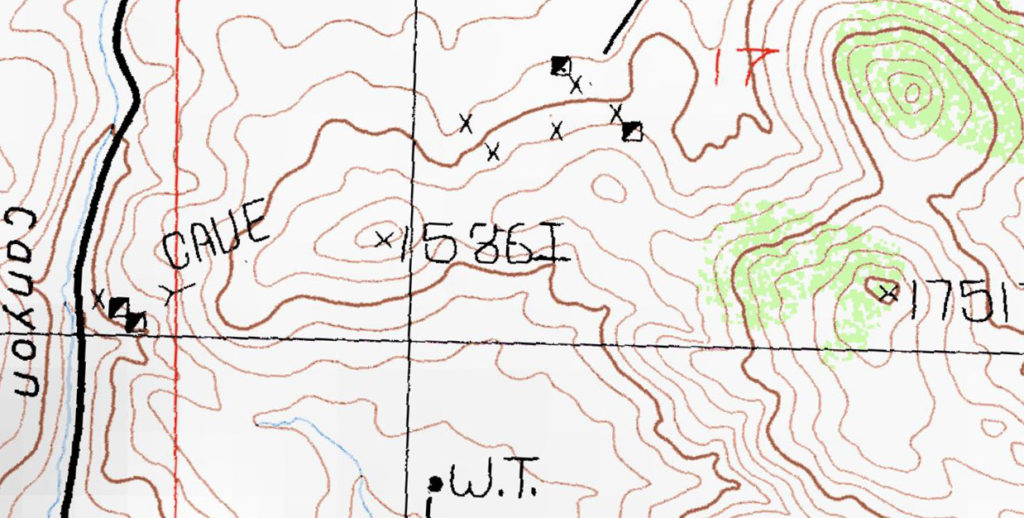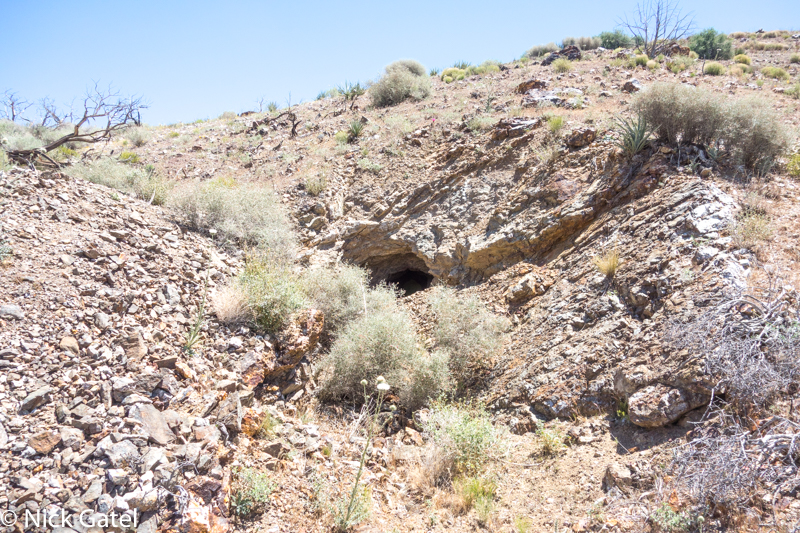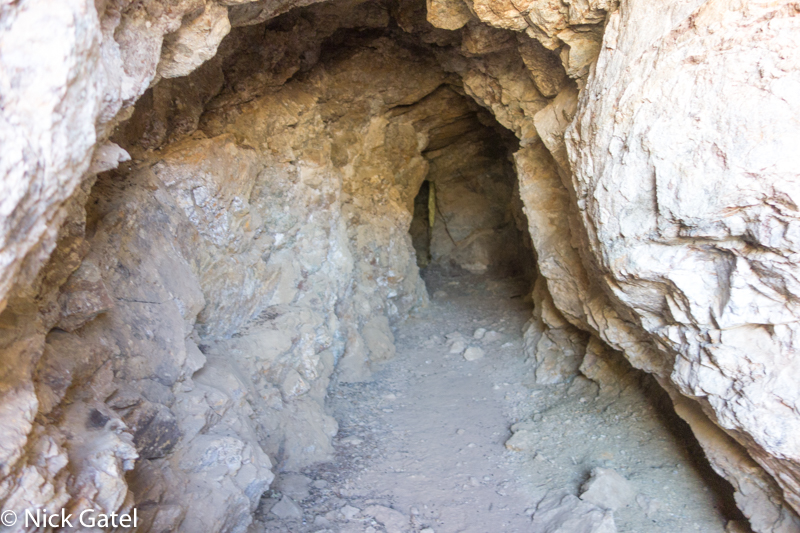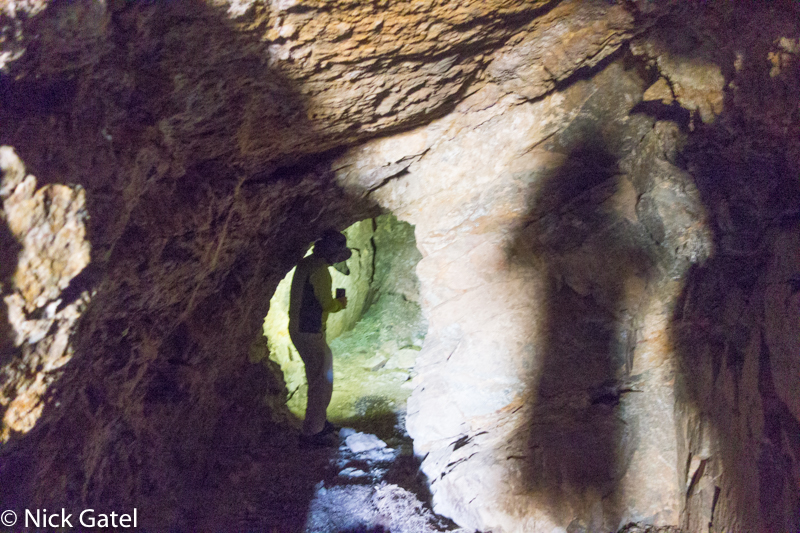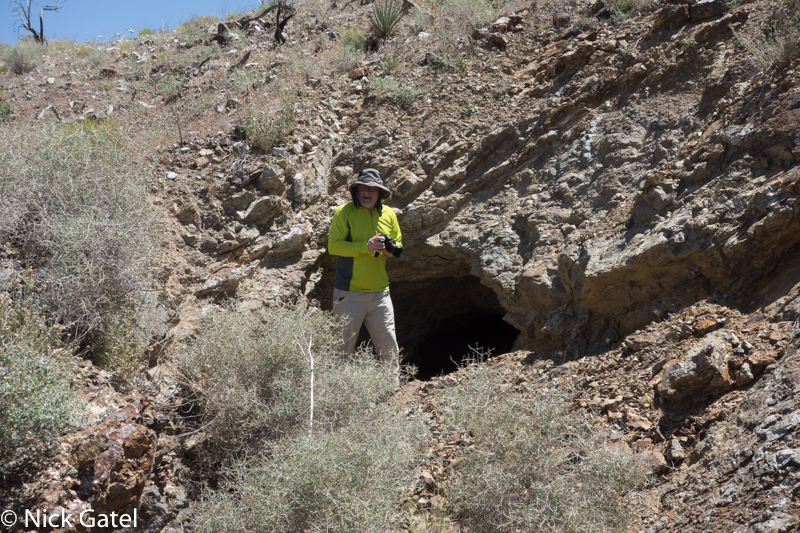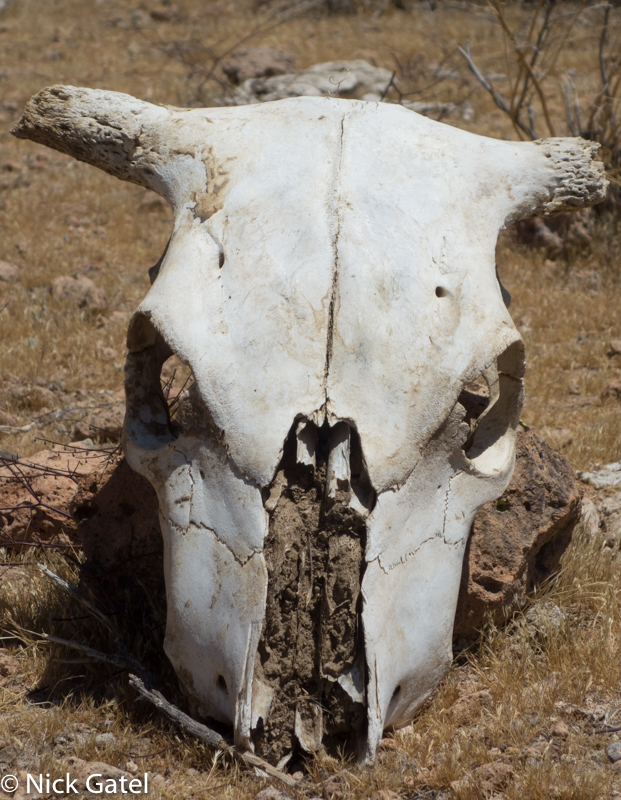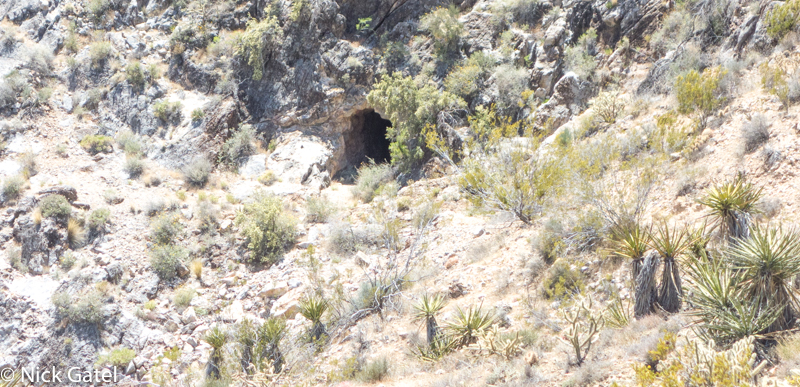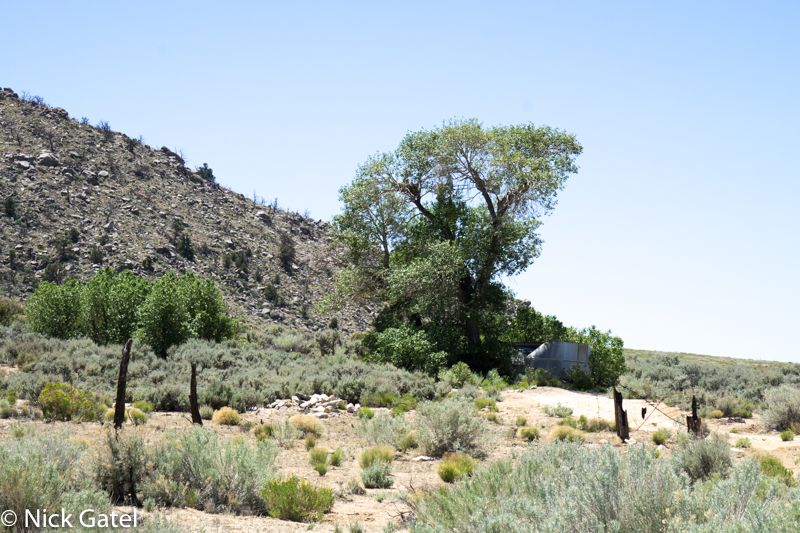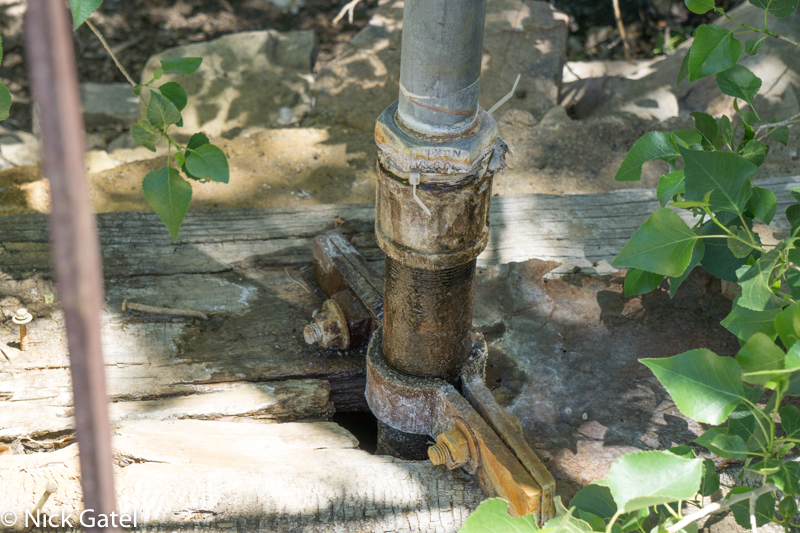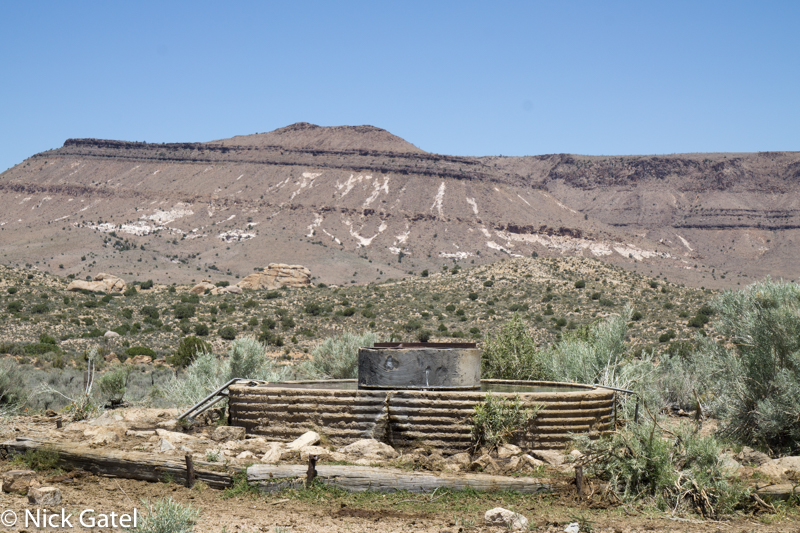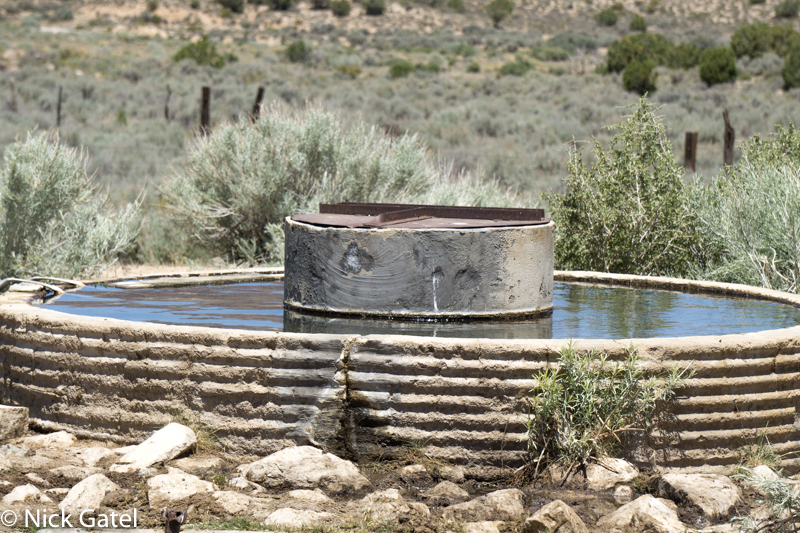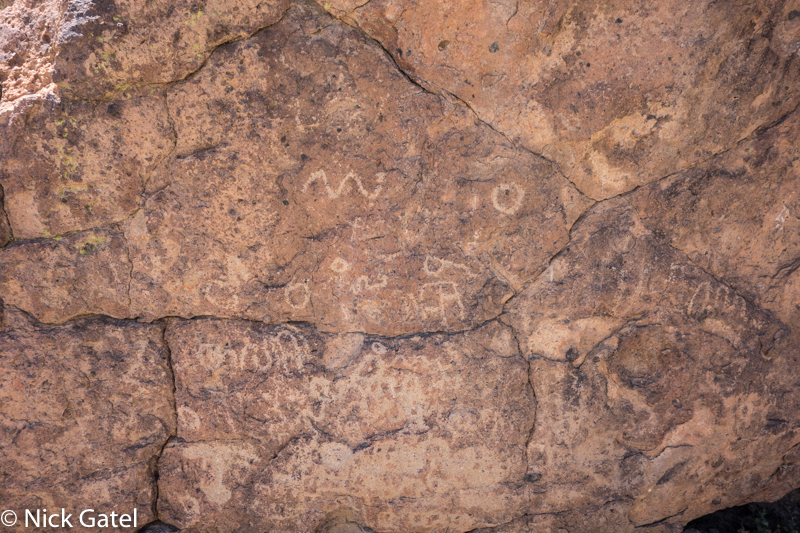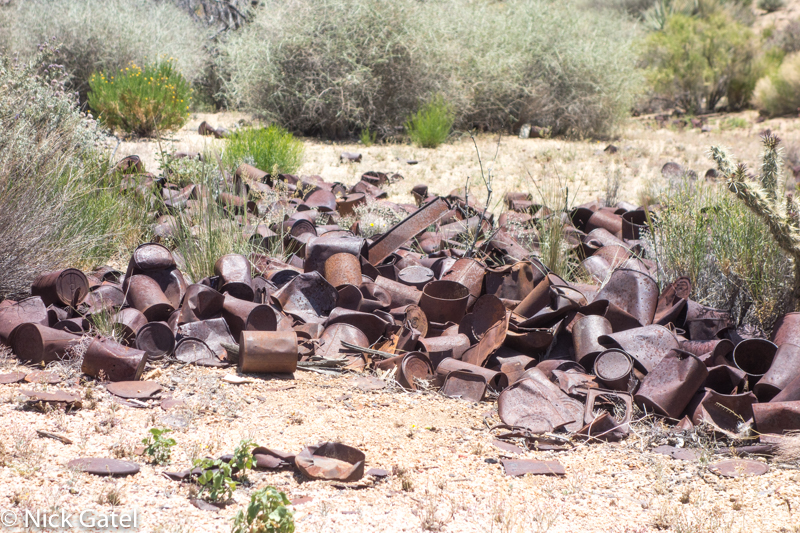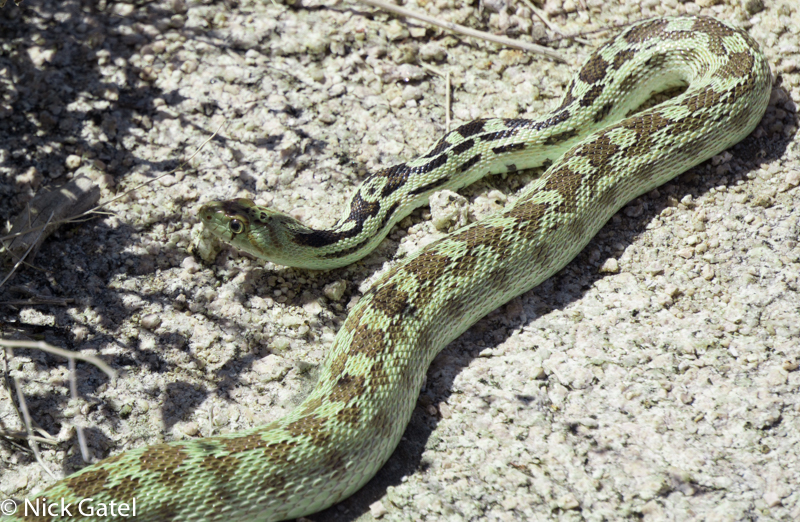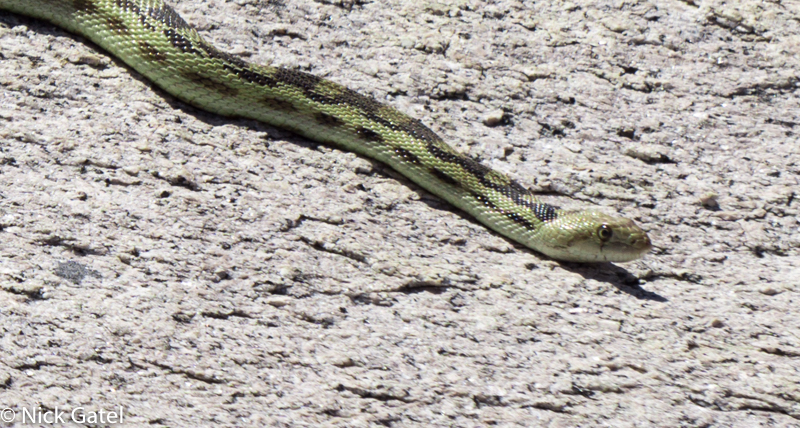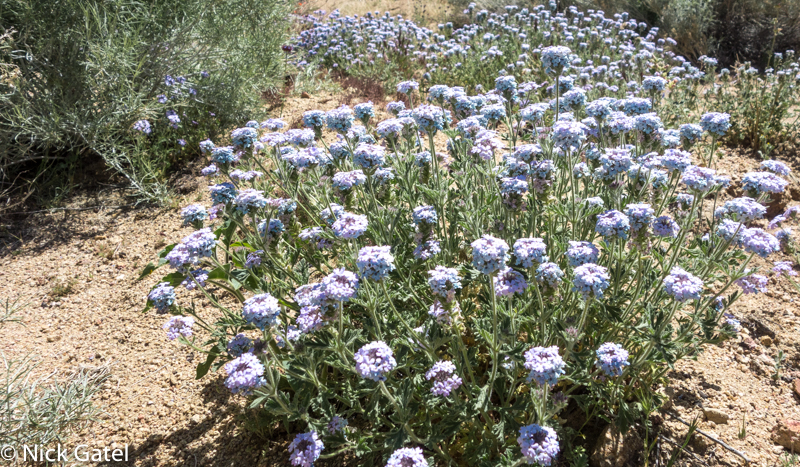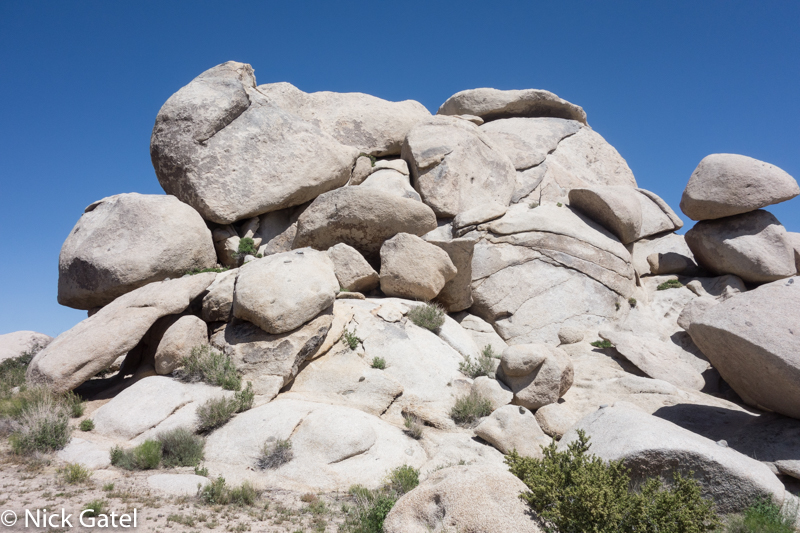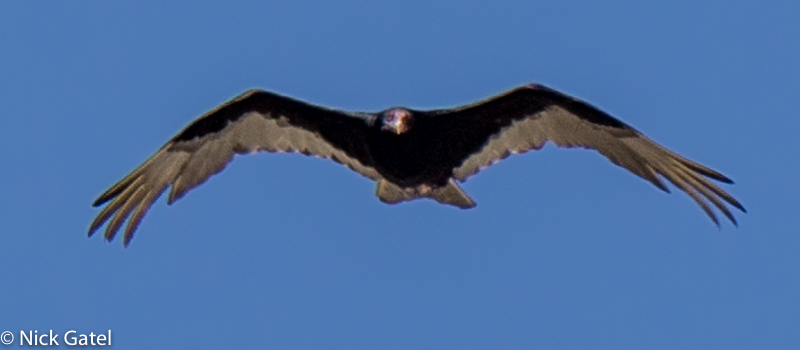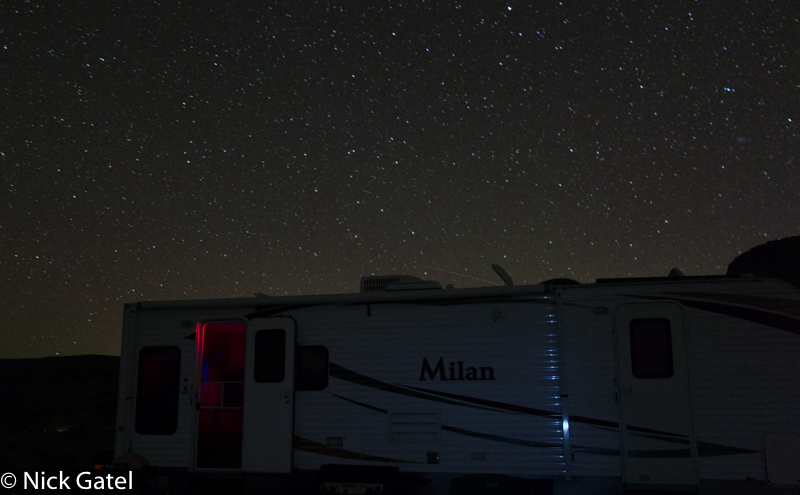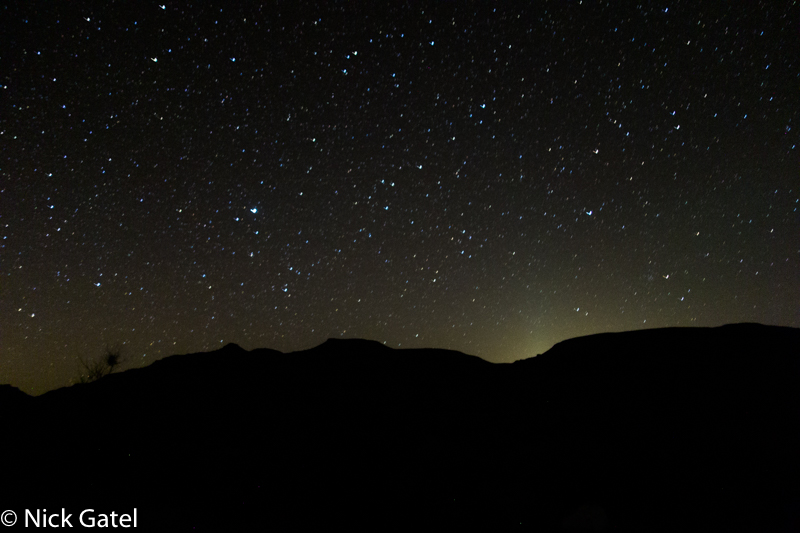After our backpacking trip, Doug had to leave for home Saturday afternoon, so Saturday morning the three of us headed out to find the cave. Locating the location was easy. Finding the cave not so much.
Looks pretty straight forward. The cave is just above two mine shafts and a few yards to the east.
But we couldn’t find it right away. We went up higher than the actual location searching for it. Finally, working his way back down the hill, Doug located the cave. Due to the lay of the land it was hidden by some mine tailings.
In the picture above, you can see the tailings (or perhaps the overburden) that create a mound just below and to the left of the cave entrance. The mound blended in with the surrounding terrain. Tailings are the left over material after ore has been processed. Overburden is the rock that is removed to get to ore. And it isn’t a cave, as we found out; it’s a mining tunnel.
Going into mines is dangerous and generally a big no-no. But we went in thinking it was a cave as I didn’t really notice the tailings/overburden until I came back out. The cave was 30 or 40 feet long and the height varied from around 5 to 7 feet. I entered the cave first, followed by Doug. I kept to the left as there was what appeared to be animal nesting material in a spot about halfway in on the right side of the cave. When I came back, Doug told me to be careful. There appeared to be a metal plate under the nesting material and it was not solid – probably a mine shaft! We didn’t disturb it any further.
Doug emerges from the cave alive.
The Rest of the Story
Joyce and I stayed at base camp through the rest of the following week. Wish Doug could have stayed longer and had a chance to experience some of the things we did.
First off, we found some more caves – only this time they were real caves – made by nature.
That will be a story for another time.
Water and Windmills
In the desert large trees growing all alone, especially cottonwood trees, usually means water is close by.
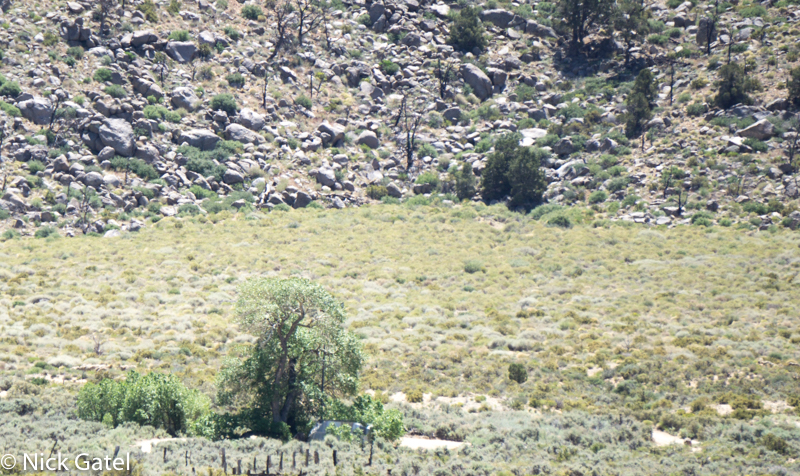
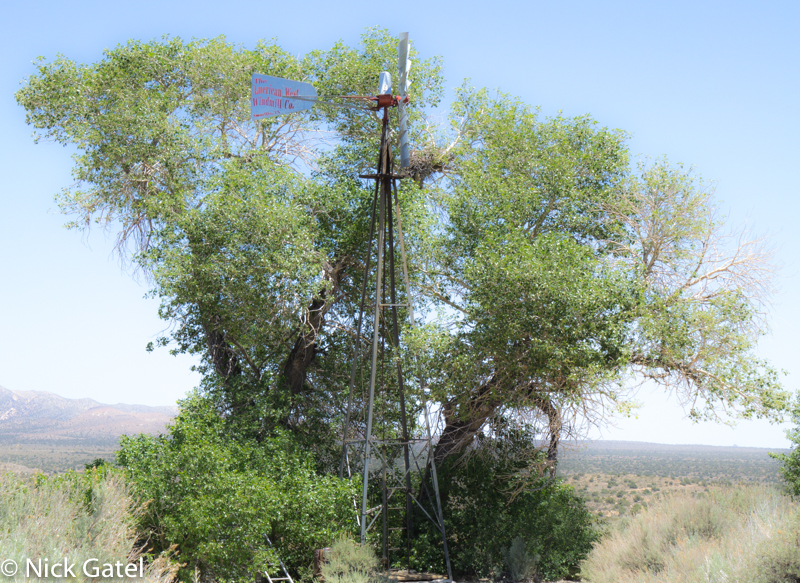

How do Water-well Windmills Work?
They are pretty simple and reliable mechanical devices. This particular well has been a reliable source of water for 160 years.
The windmill is connected to a gearbox that changes the rotary motion of the windmill into an up and down motion that moves a metal rod up and down; similar to how the crankshaft in a car engine converts the rotatory motion to push the pistons up and down.
The metal at the top fits into the metal pipe, which is called a drop pipe. The pipe runs down into the underground water table and is connected to a mechanical water pump. When the wind turns the windmill the rod moves up and down causing the water pump to pump water up out of the ground.
The drop pipe is connected to the well casing.
The water used to fill this metal cistern. It is hard to see, but a large enclosed heavy plastic tank has been placed inside the cistern. About 100 yards away is a cattle trough. Gravity forces the water from the tank to feed the trough.
The water looked pretty clean, but some years the trough is full of slimy green water.
Life in the Desert
As America began moving west during the 19th century, a few hardy souls tried to eke out a living in this sparse and often hostile environment. Homesteaders, miners, and ranchers competed for limited resources, primary of which was water. Most failed. Today a few ranchers still run their cattle on public lands. Trees in the desert are rare and the primary naturally available building material for houses was rocks. Even the first settlers, the American Indian, sometimes built rock houses. For example, there is an area in the Anza Borrego where the foundations of rocks houses, built by Indians, still can be found.
Throughout the southwest there remain many, many rock houses that were built by settlers. For an example, read this post, A Nostalgic Walk with Chuckawalla Bill. Abandoned rock houses are a fairly common site in the deserts I frequent. On this trip Joyce and I visited this one.
Archeological Finds
Rock Art by American Indians
20th Century Art
Snakes!!
One afternoon we were out exploring boulders (one of my favorite desert pastimes). I had stopped to take a couple of pictures while Joyce and Corky the Wonder Dog went ahead. Suddenly they were double-timing it towards me, “Green snakes ahead!”
So, let’s think this out. We’re in the Mojave Desert and a couple large GREEN snakes (5 or 6 feet long) are sunning themselves on a large flat boulder. Could these be the dangerous Mojave Green Rattlesnake? The Mojave Green has the most lethal venom of all North American pit vipers. The markings on the main body look like a Mojave Green.
Rattlesnakes have a triangular hear. These did not.
Also rattlesnakes have oblong pupils, these didn’t. The marking below the eye is also not that of a Mojave Green.
Our snakes had long slender bodies. Rattlers are much thicker in the middle.
The rings on the tail are all wrong for a Mojave and there is no rattle on the tip.
Nope, not a Mojave Green. Just a common gopher snake. But they were beauties.
